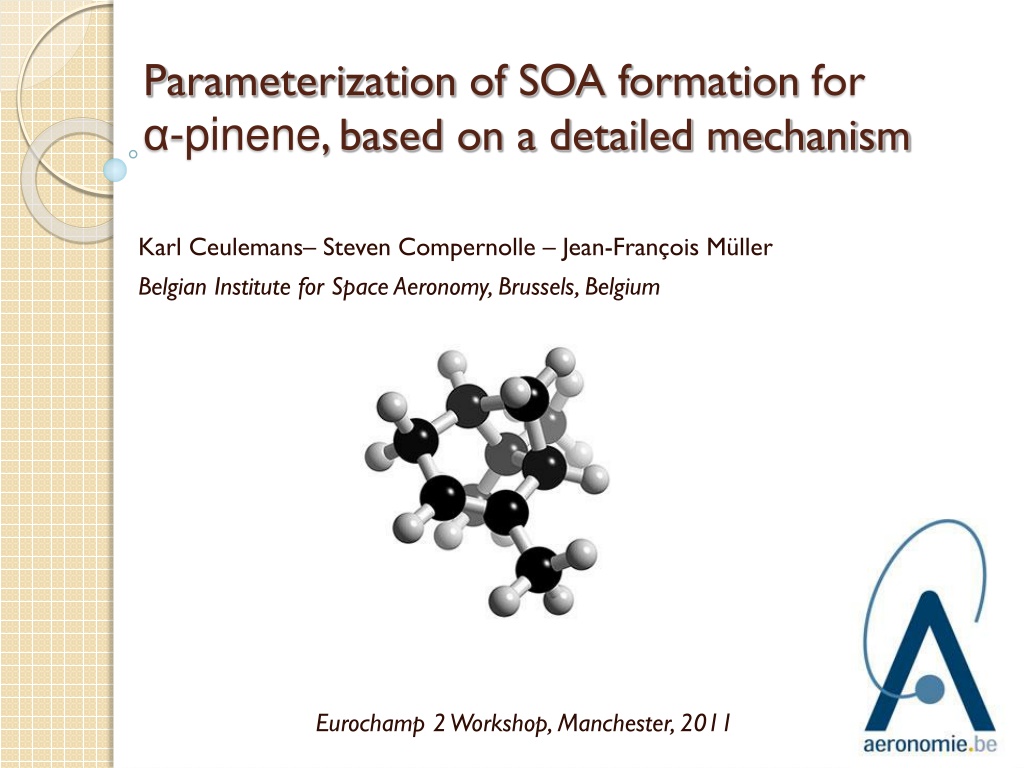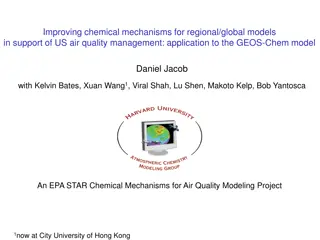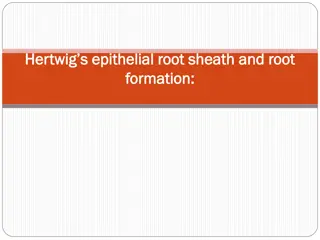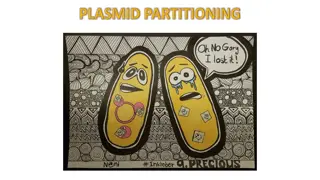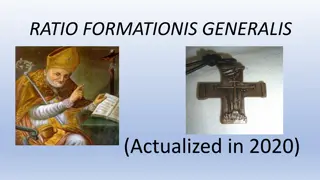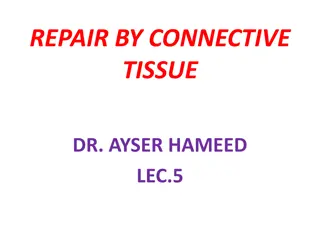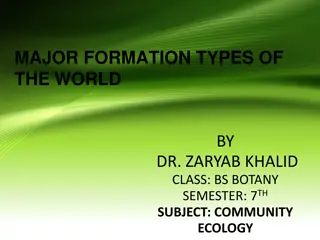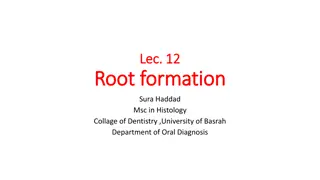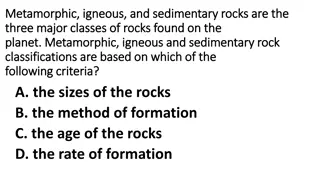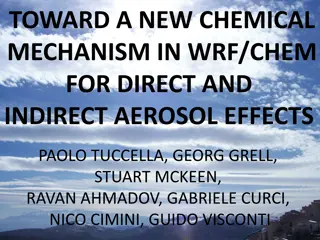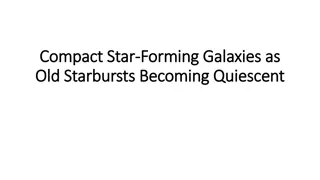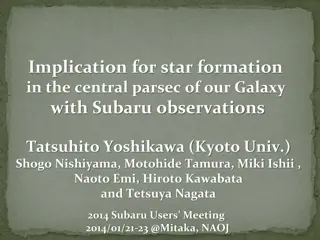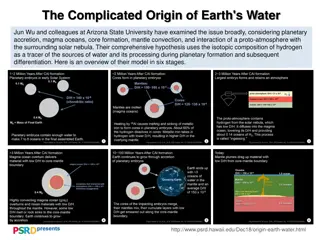SOA Formation for α-Pinene Using Detailed Mechanisms
This content discusses the parameterization of secondary organic aerosol (SOA) formation for α-pinene based on a detailed mechanism, outlining the BOREAM model for simulations, incorporating explicit and generic chemistry. Various experiments and simulations in smog chambers are analyzed, revealing valuable insights on SOA evolution and composition. Advanced theoretical calculations and oxidation reactions are key in understanding the complex chemistry involved.
Download Presentation

Please find below an Image/Link to download the presentation.
The content on the website is provided AS IS for your information and personal use only. It may not be sold, licensed, or shared on other websites without obtaining consent from the author.If you encounter any issues during the download, it is possible that the publisher has removed the file from their server.
You are allowed to download the files provided on this website for personal or commercial use, subject to the condition that they are used lawfully. All files are the property of their respective owners.
The content on the website is provided AS IS for your information and personal use only. It may not be sold, licensed, or shared on other websites without obtaining consent from the author.
E N D
Presentation Transcript
Parameterization of SOA formation for -pinene, based on a detailed mechanism Karl Ceulemans Steven Compernolle Jean-Fran ois M ller Belgian Institute for Space Aeronomy, Brussels, Belgium Picture of Alpha-Pinene Eurochamp 2 Workshop, Manchester, 2011
Outline BOREAM: Detailed model for -pinene SOA Simulations of smog chamber experiments 10-product model parameterization including ageing
BOREAM : explicit model for -pinene SOA Gas phase reaction model with additional generic chemistry and aerosol formation module 10000 reactions, 2500 compounds Using KPP solver Capouet et al. (2008), Ceulemans et al. (2010)
Explicit chemistry Based on advanced theoretical calculations and SARs Oxidation by OH, O3and NO3 Oxidation products react with OH or photolyse (now also in aerosol phase) Vapour pressure method: Capouet & M ller (2006)
Generic chemistry Second generation oxidation products lumped into semi- generic and generic products 10 carbons 1 alcohol & 2 hydroperoxide Semi-generic: carbon number and functional groups LA10HPP Generic: carbon number, vapour pressure classes (11) and 1explicit functional group LX9cONO2 Implicit parent structure, with pvap,im
Smog chamber Photo-oxidation low-NOxexperiments (Ng et al. 2007) -pinene and O3given in Valorso et al. (2011) Initial: 330 ppt NO, 330 ppt NO2, 4 ppb O3, blacklights -pinene decay well-reproduced ozone : reasonable agreement, sensitive to assumptions!
Smog chamber Photo-oxidation: SOA evolution for Ng et al. 2007 exp. 1 (low NOx): SOA mass yields are overestimated: experimental SOA yield is 40%, BOREAM simulation: 60%
Smog chamber Photo-oxidation: SOA composition Molar composition for Ng et al. (2007) exp. 1 (low NOx): SOA is dominated by hydroxy dihydroperoxides Particle phase chemistry of hydroperoxides?
Model performance: Photo-oxidation * two low-NOxexperiments, (Ng et al. 2007) ; somewhat overestimated most SOA yields within factor 2
10-product parameter model 5 scenarios: OH (low and high-NOx) O3(low and high-NOx) NO3 (high-NOx) OH + APIN APINOHO2 + + + APINOHO2 NO ' APOHNO1 ' APOHNO2 NO 1 2 2 HO + + APINOHO2 ' APOHHO21 ' APOHHO22 2 3 4 Products fit to full model simulations with ageing Diurnal cycle for VOC, OH, HO2and O3; deposition SOA equilibrium after 12 days
Two-product model parameterizations Odum (1996) C K + i = , = aer C . i i i Y M K 0 i 1 M K M 0 , i gas 0 i Y : SOA mass yield M0 : absorbing organic mass i: mass stoichiometric coefficient of product i Ki: Pankow (1994) absorption equilibrium constant
Temperature dependence of parameters Absorption equilibrium constant: H 1 T 1 T T m = i ( ) ( ) ( ) exp( ( )) ( ) K T K T , , p i p i r T R m r r r Stoichiometric coefficient = T i i 0 1 i ( ) exp( ( 298 )) T 0 C 30 C
10-product model parameters i ( 298 ) H kJ mol-1 K 0 1 i scenario product i ,i m3 g-1 p -pinene + OH, low NOx 1 0.307 -0.022 6.98 85.6 2 0.211 -0.0135 0.117 22.2 -pinene + OH, high NOx 3 0.028 -0.040 0.762 132.2 4 0.109 -0.025 0.00486 85.3 -pinene + O3, low NOx 5 0.282 -0.0132 4.155 86.8 6 0.142 -0.025 0.0158 77.1 -pinene + O3, high NOx 7 0.016 -0.057 0.837 161.8 8 0.213 -0.0054 0.00326 111.4 -pinene + NO3 high NOx 9 0.018 -0.049 0.493 172.4 0.00092 10 0.251 -0.015 147.6 Reactions OH + APIN APINOHO2 H 1 T 1 T T m = + + + i ( ) ( ) ( ) exp( ( )) ( ) K T K T APINOHO2 NO ' APOHNO1 ' APOHNO2 NO , , p i p i r T R m 1 2 2 r r r HO + + APINOHO2 ' APOHHO21 ' APOHHO22 2 3 4 = 0 i 1 i ( ) exp( ( 298 )) T T i + APIN O APINO3O2 MW 3 pinene = ' ( ) ( ). T T + + + APINO3O2 NO ' APO3NO1 ' APO3NO2 NO i i MW 5 6 2 OA K HO + + + i APINO3O2 ' APO3HO21 ' APO3HO22 = i i Y M 2 7 8 0 1 K M 0 i + + APIN NO ' APNO31 ' APNO32 . 3 9 10
10-product model curves at 298K More SOA in low-NOxthan in high-NOx(factor 8 difference) -pinene + OH leads to more SOA than -pinene + O3
Why more SOA in low than high-NOx? Hydroperoxides (condensable) Low-NOx OOH OOH OOH +O2 OH OH +HO2 OH OH + +HO2 +O2 OH OO O + O OH OH O O OH O +NO 90% O +NO High-NOx decomposition pinonaldehyde 10% ONO2 ++ OH OH O2 O + NO2 + nitrates O NO O O O O+CO2 O O ON O O CH2 Peroxy acyl nitrates More decompositions More volatile products
Verification at intermediate NOx Full model parameter model (modified)
Sensitivity to photolysis and oxidants Not accounting for photolysis of SOA during ageing Accumulation of condensables Not very sensitive to chosen OH or HO2 very high yields
Comparison with other parameterizations T = 298 K Low-NOx: Yields in this study are higher than for others, Aging impact Very low-NOx But, also high yields in Ng et al. (2007) High-NOx: similar to Presto et al. (2005)
Summary BOREAM simulations of smog chamber photo-oxidation: most SOA yields within factor 2 Some overestimations for low-NOx 10-product model fit to explicit box model BOREAM including aging Low-NOxSOA higher than previous parameterizations based on smog chambers (impact aging) Photolysis of compounds in aerosol phase important EVAPORATION: New vapour pressure estimation method
